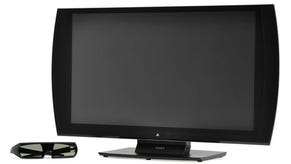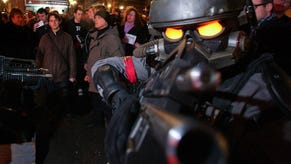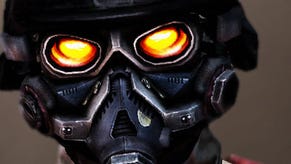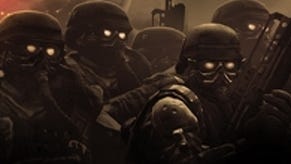Digital Foundry vs. Killzone 3
Sev the best for last.
Killzone 3 Performance Analysis
The question is, just how much has performance improved, if at all? Well, Digital Foundry's original video walkthrough and analysis of Killzone 2, split over three parts, illustrates just how bogged down the renderer could become when the action really became intense.
This compilation of testing gameplay excerpts is a worthy workout for the refined tech and proves that while general performance across the run of play has improved significantly, there are still issues in hitting the target 30 frames per second. However, even when the engine is under stress and frames are being dropped, the overall sensation is of a game that runs more smoothly than Killzone 2. So, how is this possible?
Crucial to the sense of improved performance is the way in which the control scheme has been improved. It's not just about how smooth the screen refreshes, it's also about the basic handshake between the player and the game. Put simply, Killzone 3 responds much more quickly to your commands than its predecessor.
In revamping the control scheme, Guerrilla was faced with an unenviable task. In many ways, Killzone 2 felt more realistic than the average shooter and the control system played an important part in that. You "felt" the weight of Sev's equipment weighing him down, you felt the inertia in every move he made, and this tied in extremely well with the game's animation, and the movement on-screen as you were running and jumping.
On the flipside, input lag was clearly an issue even on movements where you would not expect there to be any kind of latency, inertia-driven or otherwise. As demonstrated in our original Killzone 2 controller lag testing, the simple act of firing a pistol produced a 150ms latency: that's 50 per cent additional delay compared to other shooters such as Halo 3 and Unreal Tournament 3.
Adding to the issues was the relationship between frame-rate and lag: when the game dropped frames, further latencies were added. Factor in the lag inherent in flatscreen technology and quite often you would see response dulled to over 200ms or higher - a fifth of a second, and clearly unacceptable for a fast-paced first person shooter. Patches issued by Guerrilla seemed to concentrate on tweaking the deadzone on the analogue sticks, but the inherent input lag remained.
We've already taken a look at some of the improvements Guerrilla has made to the control scheme in our previous coverage. In the tech analysis of the Killzone 3 beta, we revisited the measurements and discovered that baseline latency has dropped by 33ms, from 150ms down to a crisper 116ms.
However, it's not just the baseline lag that has been improved. Where it is really felt is when the renderer drops frames. While latency is not as impressive as it is with the engine running at its optimal 30FPS, the dip in response is nowhere near as pronounced as it was in Killzone 2. The result is that control still feels good even when the tech is under stress, and it also ensures playability isn't too badly affected in the split-screen and 3D modes, which definitely suffer from more dips in performance than the standard single-player campaign mode.
The overall impression is quite reminiscent of Platinum Games' Vanquish - a game with an immensely variable frame-rate that still managed to provide satisfactory and relatively consistent response times from the controls. Perhaps Guerrilla Games has decoupled polling the controller from the main game logic, ensuring that Killzone is always operating with fresh input from the joypad when rendering the next frame?
Control is further enhanced with what must surely be one of the most comprehensive implementations of PlayStation Move support. On the face of it, the control system is very much like that seen on Wii shooters: the navigation controller (or DualShock 3) sits in the left hand, mostly controlling running and strafing, while Move itself is primarily utilised for aiming, shooting and switching to iron sights. The amount of customisation available to the control scheme is remarkable with various lock-on modes available, and plenty of scope for adjustment in the sensitivity of movement and the deadzone.
The precise 1:1 nature of Move offers up a finer granularity of control in Killzone 3, resulting in a speedier, more accurate way of aiming at your opponents. Iron sights in particular benefits extremely well from the Move implementation, especially useful bearing in mind that damage levels are tied closely to the area of the body you are shooting.
Gesture-driven controls are also incorporated, specifically for reloading and melee attacks. Twirling the move clockwise or anti-clockwise replaces the clip, while thrusting towards the screen invokes hand-to-hand combat. Typically, gesture-driven controls take significantly longer to activate than the simpler process of merely pressing a button, but at least here the functions aren't especially time-sensitive.
The depth and complexity of the Move support in Killzone 3 really is quite remarkable, to the point where iWaggle3D managed to produce a mammoth 26-minute video showcase of just about every conceivable element of the control implementation.
The 41.5GB Blu-ray: Why?
Killzone 2 weighed in at around 13GB of data pressed on the Blu-ray, while a quick look at the disc structure of the new game confirms that the sequel consists of over 41.5GB of data: a monumental increase in the amount of shipped data that has necessitated a switch to a dual-layer disc. The major contributory factor to the increase is the shift from engine-driven cinematics to video data streamed directly from the Blu-ray.
Guerrilla has opted to create a seamless "zero loading" experience using a similar technique to that seen in the Uncharted games and God of War III. Video sequences are streamed from the disc while game data for the next level loads in the background. By the time the cinematic storytelling is complete, the game has already spooled in all the data required to kick off gameplay on the next level. As long as you don't skip the cut-scenes, Killzone 3 has no visible loading whatsoever.
There are over 32GB of video sequences stored on the Blu-ray disc, with game data accounting for around 9GB, all powered by a 20MB executable. Interestingly, despite having the option of using Sony's own h264-based PAMF video tech for the cinematics, Guerrilla has opted instead to use Bink - an ancient video codec with often questionable image quality that requires large amounts of bandwidth to achieve acceptable quality.
As demonstrated in our Final Fantasy XIII Endgame feature, its quality level simply doesn't compare with more recent video compression technologies, but with the space of Blu-ray available, Guerrilla can simply allocate more bitrate at the videos in order to improve quality. A six-minute cinematic occupies around 1.1GB of space on the Blu-ray disc.

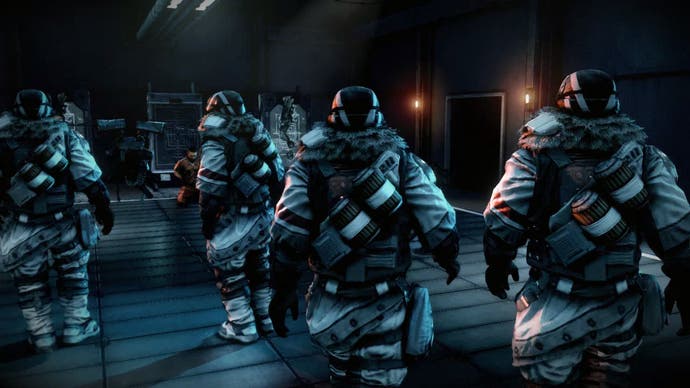
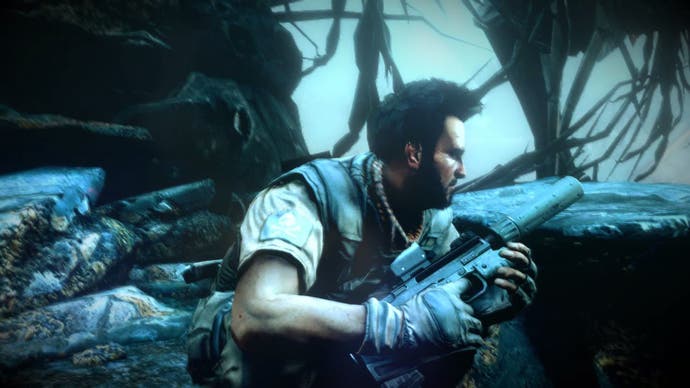

The cinematics themselves are based on what appear to be offline renders of the game engine in action, so there is a good sense of continuity between video sequences, engine-driven cut-scenes and gameplay. However, even when allocated comparatively massively amounts of bandwidth, video artifacts are clearly seen during playback of fast-action scenes. Detail also tends to smear into macroblocks on darker areas.
The majority of the cinematics are actually stored on the disc twice. The traditional 2D video encode of each major cut-scene is joined by a stereoscopic 3D counterpart, adding around 16GB of extra bulk to the disc. The 3D versions of the videos get the same bandwidth allowance as the 2D encodes - not a problem as the stereoscopic version uses half-resolution per eye.


